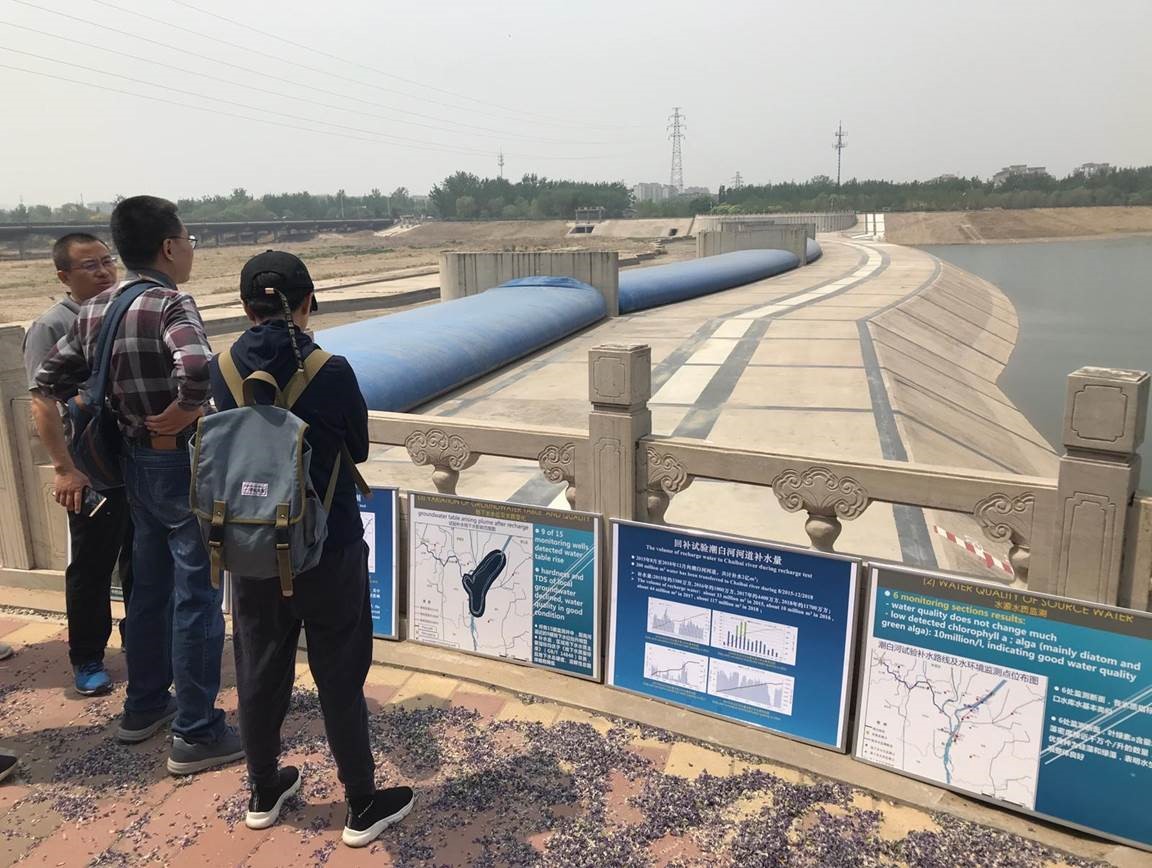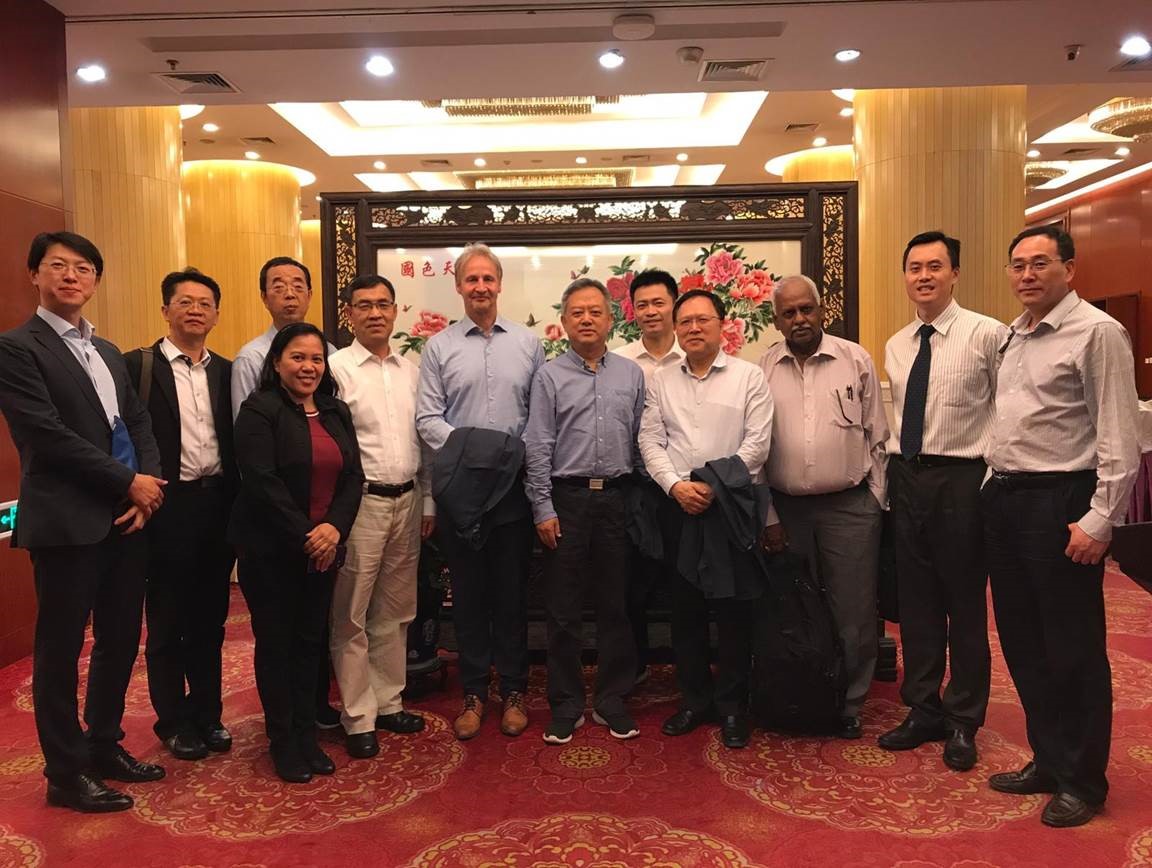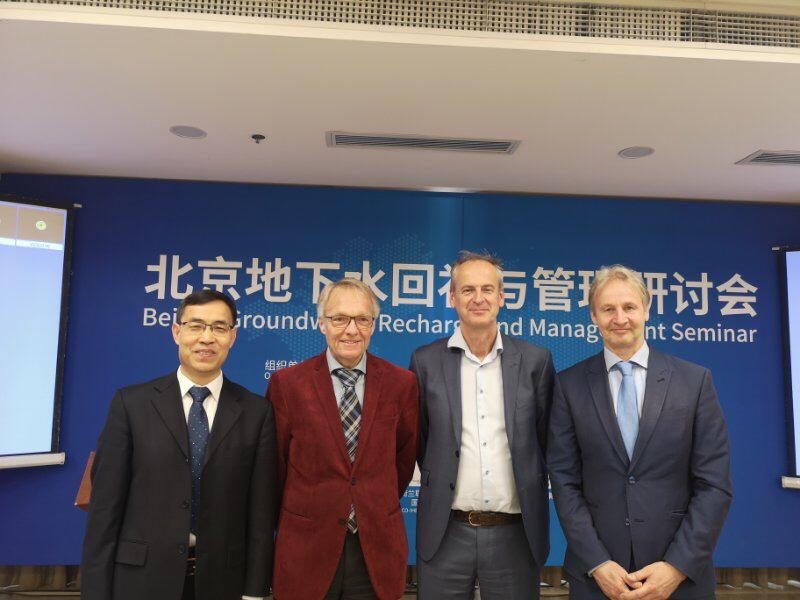Good practice for managed aquifer recharge in Beijing
05 June 2019Beijing is known for its extreme weather events and has been subject to severe water shortages. Adequate groundwater levels are key to securing urban water supply for households, but also for industrial and agricultural needs. However, Beijing’s groundwater has been overexploited for decades. The South-North Water Transfer Project transfers the hard-needed water towards the north. But how can they use this water to recharge the groundwater? For the past three years, we have been looking into this solution with the Beijing Water Authority.

Together with engineering firm Royal Haskoning-DHV and educational institute IHE-Delft, we produced guidelines for Managed Aquifer Recharge and carried out a feasibility study to create an aquifer recharge project in the Chaobai River near Beijing. A technique that is still uncommon in China, but increasingly considered important to cope with water shortage. The study was presented at the ADB’s Beijing International Groundwater Resources Management Workshop in May 2019, where eighty participants shared experiences from China (Shandong, Deyang, Jinan), the Netherlands, Pakistan, Oman and Afghanistan.


One of the most common causes of low groundwater levels is the high volume pumped to the surface. The so called aquifers (underground water reserves) cannot replenish fast enough. Luckily, we can influence this process and recharge these aquifers. For Beijing, we looked into managed aquifer recharge. This means that the process is actively managed and expedited.
To explain the concept of managed aquifer recharge, we used the 'Amsterdam Water Supply Dunes system’ [Amsterdamse Waterleidingduinen (You are leaving this website)]. This natural system has been operational for over 60 years, covers an area of around 3500 ha and produces around 60 to 65 m3 drinking water annually. Water from the river recharges the groundwater and continues its journey to become tap water. A process which takes about three months:
- Through pipelines, pre-treated surface water from the Rhine River is continuously infiltrated in the dune area via 40 infiltration ponds.
- In the infiltration ponds, the water slowly recharges the groundwater. Through gravity, the water is naturally pulled into the dunes, where the sand automatically and naturally filters the water.
- Most of the water automatically comes back to the surface in lower-laying areas and drains also help in reclaiming the rest.
- After further treatment the water can be transported and used as tap water.
Such a managed aquifer recharge project has more advantages than just recharging the groundwater levels. It can help increase the water supply security and quality, as soil infiltration helps remove harmful substances. Also, the water storage in the aquifer can provide a strategic supply during calamities. In addition it will contribute to the reduction of operational costs, as this form of water storage does not occupy any land area.
U kunt deze video niet bekijken omdat tracking cookies uit staan. Lees meer op de privacy- en cookiespagina.
Anne te Velde, Counsellor Infrastructure and Environment at the Netherlands Embassy in Beijing explains: “Although there are many differences between the cities of Amsterdam and Beijing, the good practice of Amsterdam’s dune water system sets an example for the Beijing Water Authority. The feasibility study shows a large potential for the Chaobai River channel for managed aquifer recharge.”